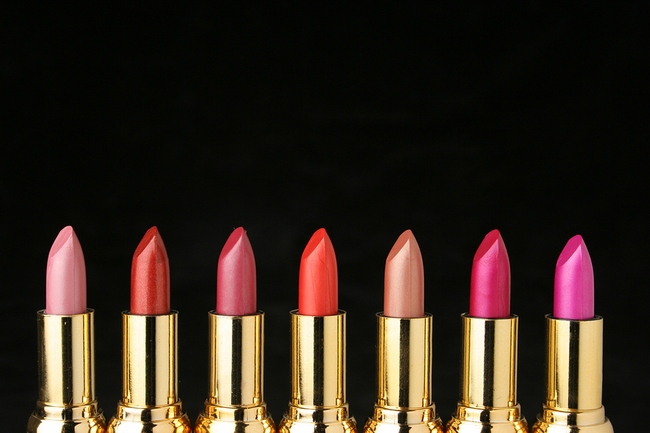- Make It Yourself Lavender Heart-Shaped Bath Bombs!
- 20 Things You Never Knew About “Down There”
- 12 Best Foods For Those Suffering From Arthritis Pain
- 12 Personal Hygiene Mistakes Almost Everyone Makes (Mom Never Told You About #4!)
- 15 Medicinal Plants And Herbs From The Cherokee People
- 12 Mind-Blowing Benefits Of Drinking Coconut Water During Pregnancy
- 12 Outstanding Winter Foods That Won’t Fatten You Up Like A Christmas Turkey
Is Your Makeup Killing You? Reverse The Damage!

Photo credit: bigstock.com
It’s not surprising that cosmetics is a multibillion dollar industry. The desire to make ourselves look our best so we can improve how others perceive us and attract a mate is one of the most powerful instincts we have. It’s what leads billions of people, particularly young women, to purchase all manner of cosmetic goods to enhance beauty. But new research shows that many common makeup items may have harmful ingredients that can contribute to the disruption of vital functions in your body. Keep reading to find out what the facts are, how you can reverse the damage (it’s easier than you think!), and how to make smart decisions when it comes to cosmetics.
There are many chemicals with potentially harmful effects that are used in cosmetic products, but some of the most common include the following.
1. Parabens
These chemicals are used as a preservative to inhibit the growth of mold, bacteria, and other undesirable things in deodorant, facial cleaners, and makeup. Unfortunately, paraben also appears to have carcinogenic (cancer-causing) properties. Paraben has been shown to mimic the chemical properties of the female hormone estrogen and has been linked to a higher risk of developing breast cancer. Biopsy results uncovered traces of these chemicals in patients with breast tumors.
2. Triclosan
This antimicrobial chemical is used in many brands of antibacterial soap, deodorant, and toothpaste. Triclosan is widely regarded as a having endocrine disrupting properties. The fact that its antibacterial properties are contributing to making the few bacteria that do survive stronger should also be cause for concern.
3. Formaldehydes
These are used in many different cosmetic products to prevent the growth of bacteria. Some people experience allergic reactions after skin exposure to it, and it also can weaken the immune system. But the major risk of formaldehydes is that they too are considered a carcinogen by the International Agency for Research on Carcinogens. Formaldehydes are commonly found in eye shadows, nail polish, shampoos, and conditioners.
Continue to Page 2

Photo credit: bigstock
4. Sodium lauryl sulfate (SLS)
Another very common chemical is sodium lauryl sulfate (SLS) and also sodium laureth sulfate (SLES). These chemicals are found in more than 90 percent of commercially available cosmetics, as well as many household cleaning products. On their own, these chemicals can irritate the eyes, skin, and respiratory system. But these ingredients also have the ability to combine with other chemicals to form carcinogenic compounds like nitrosamines. As stated above, these ingredients are quite ubiquitous, but they are most commonly found in shampoos, mascara, acne facial cleansers, and body washes.
This is just a small sample of chemicals found in hundreds of makeup and cosmetic products, but don’t panic!
That list probably has you good and scared, right? Just relax. It turns out that it’s easier to get this stuff out of your system that you might think.
A study conducted by researchers at the Clinica de Salud del Valle Salinas in Salinas, California, as well as the University of California Berkley (UCB), found that teenage girls participating in the study were able to significantly reduce the levels of these chemicals in their bodies in only three days.
It’s a simple matter of just switching to cosmetic products with lower concentrations of these chemicals. Researchers tested urine samples from the participants before and after the experiment to measure concentrations of potentially harmful chemicals in the body. They found that after only three days of using makeup products with fewer chemicals, the body was able to rid itself of the aforementioned chemicals to a surprising degree.
Analysis of the urine samples at the end of the experiment showed that paraben levels of two types or parabens, methylparaben and propylparaben dropped by as much as 45 percent. Concentrations of benzophenone-3 and triclosan fell by 36 percent. There was also a 27 percent reduction in the level of metabolites of diethyl phthalate.
It is almost impossible to totally avoid exposure to potentially harmful ingredients in cosmetics. But that doesn’t mean you should panic. It’s not radioactive — if you used standard deodorant or eye shadow this morning, it’s not going to kill you. But repeated exposure over time could lead to health problems down the road. The key is to educate yourself about the types of ingredients included in the products you use. Study the labels on the products you’re using, and do your due diligence by researching them online.
READ ALSO: Are Cosmetics Killing Us? Video
Choose products with fewer harmful potentially ingredients and you will drastically reduce the levels of these chemicals in your body, and reduce your risk of related health problems later in life. Stay safe!
References:
www.universityofcalifornia.edu





























